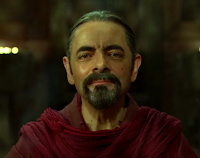City Streets: This music was of a techno style and suggested an adult nature which instantly established it wouldn't appeal to our target audience. We really liked the modern feel it had to it and expressed to us our film was set in present time, so we then understood we needed a modern sound to complement our film footage, typography and overall style.
Agent X: When listening to this soundtrack my group didn't like the heavy bass and male domination expressed. It is inappropriate for our target audience and doesn't integrate with our genre of comedy.
Alone In Love: Even though members of my group liked the romantic feeling of this soundtrack we discussed the fact it was a jazz piece mainly recognised in the 1960's era, therefore defeating our modern idea. The low toned instruments also added a sense of sadness and took away the upbeat feel we wanted.
Follow That Car: This was our favourite soundtrack as it had an upbeat feeling which expresses a sense of excitement and a positive outcome to the audience. It also works well with our target audience as we needed a childlike comical tune which would guide you with our images. A member of the group mentioned it reminded them of a couples dance in which it would represent our underlying theme of romance; the fast pace also exceeded our expectations and presented our genre well. Overall we are highly satisfied with this soundtrack and will be using it in our title sequence.
Editing
We went onto editing today because we was unable to get to the location our next shoot would be at. We began by converting all the footage and then placed them in chronological order to give us an understanding of we what had already filmed; as we were doing so we were constantly referring back to our storyboards to ensure we were being accurate. The main focus of this editing session was the speed of our clips, either speeding up or slowing down. I feel it went well because we was able to see the small progress we was making in filming all of our footage.
Below is our flash light test before editing




































